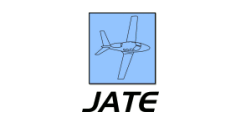Abstract
Transport-category or FAR/CS 25 certified airplanes may occasionally become braking energy capacity limited. Such limitation may exist when heavy airplanes are departing airports at high-density altitudes, on relatively long runways, and/or possibly with some tailwind component. A maximum braking energy VMBE speed exists which may limit the maximum allowable takeoff decision/action speed V1. The ever-existing possibility of high-speed rejected takeoff in such conditions may also limit the airplane gross weight for declared available distances. To gain deeper insights and acquire better understanding of the topic, a theoretical model of the maximum braking energy and the related VMBE speed for T-category airplanes was developed. The total kinetic energy of an airplane includes translational and rotary kinetic energy and the potential height-energy component for sloped runways. Time-dependent airplanes’ mechanical power expression has been derived. Weight transfer during dynamic braking has been implemented in the full nonlinear model. Added mass due to rotary inertia of spinning components has been incorporated and assumed constant. The brakes thermal model is based on a lumped-parameter analysis of ventilated brake rotors and stators; the thermal model is based on a small Biot-number approximation and sufficiently well describes the physics of friction braking. The nonlinear differential equations of motion and the differential thermal model are coupled. A nonlinear model incorporating a set of ordinary differential equations with tire slip can be solved numerically. This model enables determination of the entire history of translational and angular accelerations and speeds, longitudinal distance, forces, torque, and disc temperature during braking. A simpler model assuming constant physical and thermodynamic parameters is solved analytically for constant negative acceleration. This linear analytical model has been used as a workhorse method in our calculations. A new semi-empirical expression of temperature-dependent friction coefficient on brake rotor-stator pairs has been proposed. A theoretical model of maximum braking energy speed VMBE, which includes density-altitude, runway slope, and wind effects as parameters, has been developed for the first time to the best of our knowledge. A comparison of the theoretical VMBE model showed good agreement with measured and approved data for the B737-400 airplane at different density altitudes with and without, individual and combined, runway slope and tailwind effects. Results for new and fully worn brakes were obtained showing the effect of elevated temperatures on brake fade and consequently braking time and distance.
Recommended Citation
Daidzic, Nihad E.
(2017)
"Modeling and Computation of the Maximum Braking Energy Speed for Transport Category Airplanes,"
Journal of Aviation Technology and Engineering:
Vol. 6:
Iss.
2, Article 1.
Available at: https://doi.org/10.7771/2159-6670.1154
Included in
Aerospace Engineering Commons, Applied Mechanics Commons, Aviation Commons, Heat Transfer, Combustion Commons, Tribology Commons


